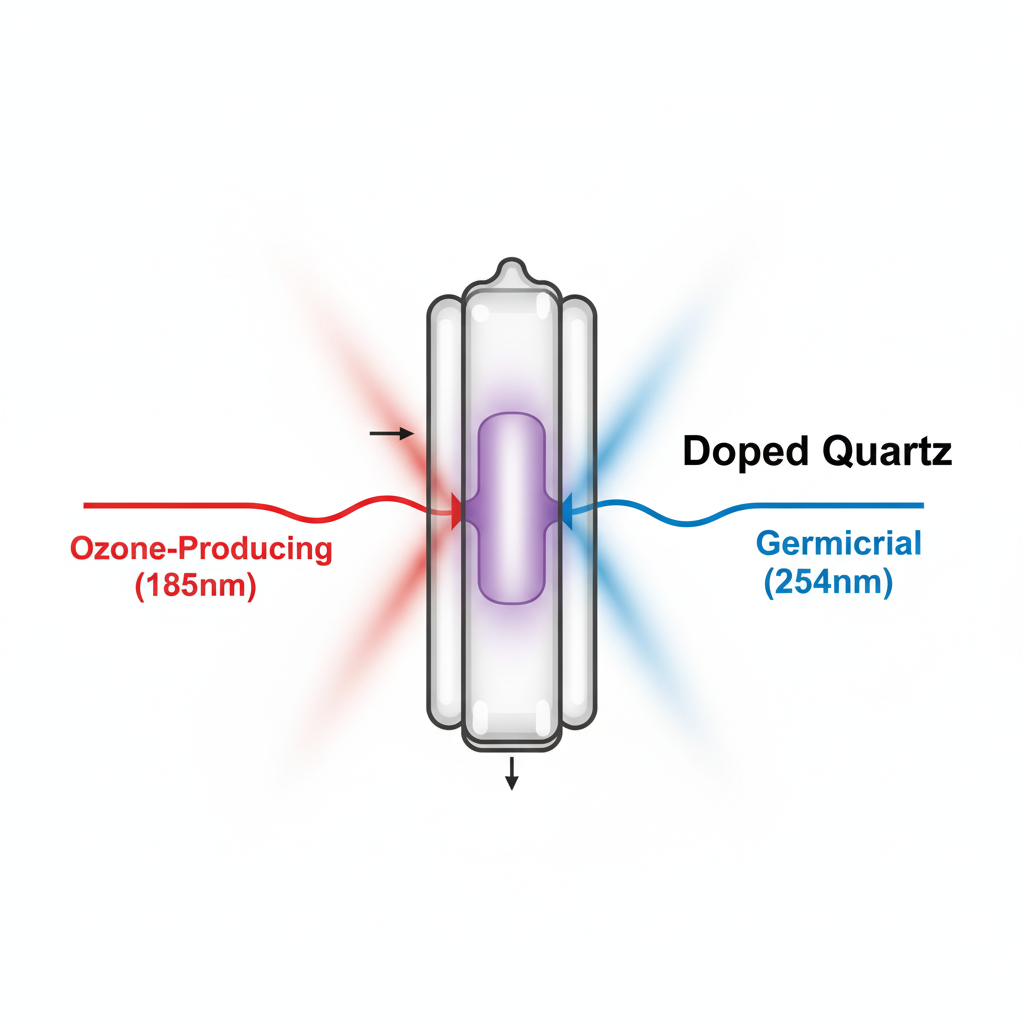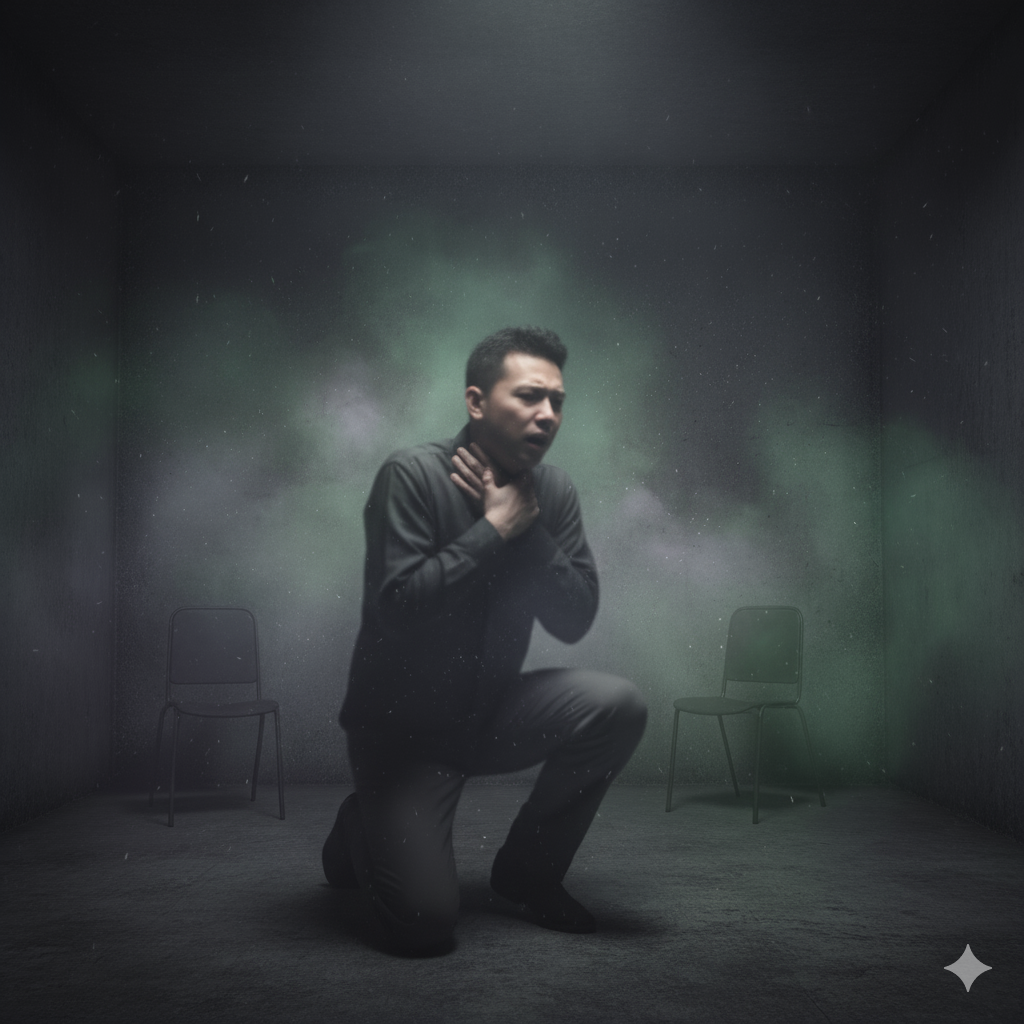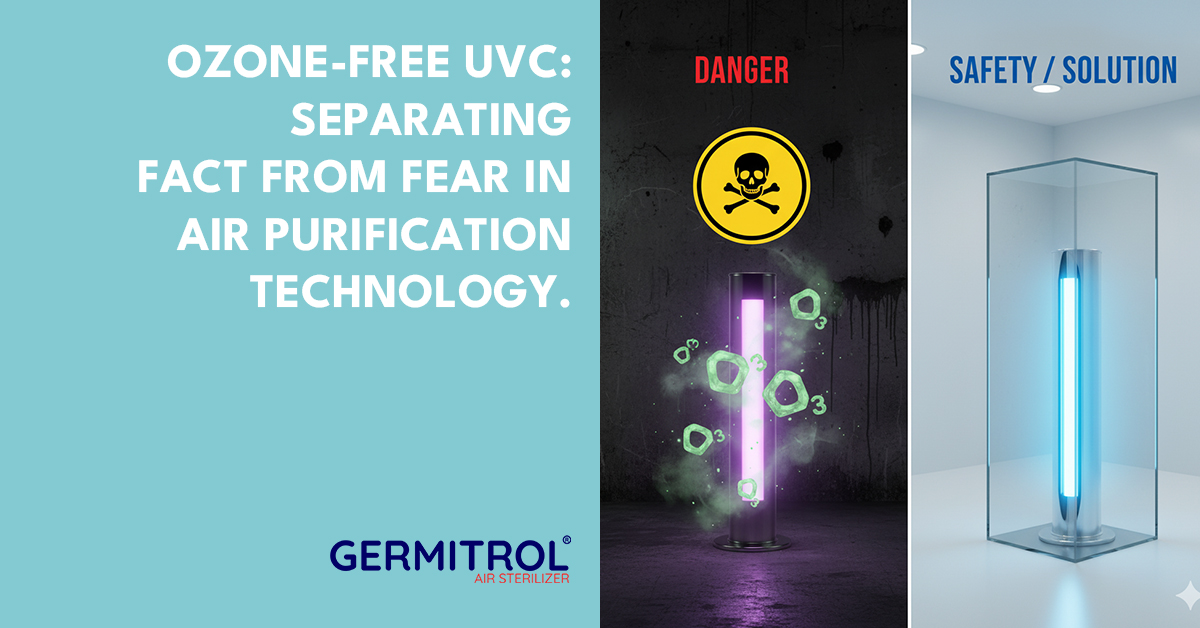We all know the incredible power of UVC light in effectively killing germs. But when people research air purifiers, one critical question always arises: Is UVC safe? The answer lies in technology designed to be Ozone-Free UVC.
But whenever a conversation turns to UVC air purifiers, one critical question always arises: Is it safe?
That concern is linked to a pervasive fear: Ozone.
This post separates the fact from the fear, explaining the fundamental chemistry behind ozone generation, why technologies like plasma air purifiers can contribute to the problem, and how Ozone-Free UVC technology is not only possible but the critical standard for safe, effective air sterilization.
Fact: What is Ozone and Why is it Harmful?
To understand the fear, we must first understand the pollutant. Ozone (O₃) is simply three oxygen atoms bonded together. While ozone high in the atmosphere protects us from the sun’s most dangerous rays, ground-level ozone is a serious health hazard and a component of smog.
Why is ozone dangerous when generated indoors?
- Lung Irritant: Ozone is a potent lung irritant. Inhaling it, even in small amounts, can cause coughing, throat irritation, chest pain, and shortness of breath.
- Respiratory Damage: It can aggravate asthma and other chronic respiratory diseases, and even damage the lung tissue itself.
- Health Authority Warnings: Health organizations like the EPA strongly advise against the use of air cleaners that intentionally generate ozone, and they regulate maximum safe levels.
The science is clear: we must eliminate airborne germs without creating new respiratory irritants.
The UVC Safety Standard: Why Not All UV Lamps are Created Equal
The legitimate link between UV light and ozone is a chemical one. However, the fear applies only to a specific type of UV light, not the kind used in responsible UVC air sterilizers.
The Science of Ozone Generation: The Critical Wavelength
Ozone is only generated when UV light strikes oxygen molecules (O₂) at a specific, very short wavelength: below 200 nanometers (nm).
- The Germicidal Wavelength (254 nm): This is the wavelength that kills germs. It scrambles the DNA/RNA of microorganisms. It does not produce ozone.
- The Ozone-Producing Wavelength (185 nm): This wavelength hits the oxygen molecule (O₂) and causes it to split, allowing a single oxygen atom (O) to bond with another O₂, creating O₃ (ozone).

The difference between a safe, effective UVC air purifier and a hazardous one comes down to the quality of the lamp’s quartz glass.
- Ozone-Generating Lamps: Use standard quartz glass that allows the dangerous 185 nm wavelength to pass through.
- Ozone-Free UVC Lamps (The Solution): Use doped quartz glass. This specialized glass acts as a filter, blocking the 185 nm wavelength entirely while still allowing the powerful germicidal 254 nm light to pass through unimpeded.
This simple design choice is what makes an effective UVC air sterilizer truly Ozone-Free UVC.
Trading Germs for Ozone? The Plasma Air Purifier Distinction
It’s vital for consumers to know that the ozone issue is not exclusive to UVC light. Another increasingly common technology used to target airborne pathogens, plasma air purifiers (often marketed as bipolar ionization), also presents an ozone risk.
The Problem with Plasma (Ionization)
Plasma-based air cleaners work by sending a charge into the air, creating ions that attach to pollutants and cluster them together.
- Ozone as a Byproduct: The process used to create these ions, particularly the electrical discharge, can generate ozone as an unintended byproduct. Many independent tests have demonstrated that certain commercial ionization units do produce measurable levels of ozone, sometimes above recommended safety thresholds.
- Lack of Certification: Unlike Ozone-Free UVC lamps, which can be certified to block the ozone-producing wavelength, the ozone byproduct of ionization can be inconsistent and harder to control, making their air purification results less reliable in terms of health safety.

When selecting technology, consumers must scrutinize the claims of any purifier that uses electrical discharge to treat the air, knowing that they may be replacing airborne germs with a known respiratory irritant.
Fear Debunked: How Germitrol Guarantees Ozone-Free UVC
We believe that germicidal efficacy should never come at the expense of human health.
Germitrol’s commitment is simple and absolute: we only use ozone-free certified lamps and doped quartz technology in our UVC air sterilizers. Our systems are meticulously engineered to maximize the germ-killing 254 nm light while completely blocking the ozone-producing 185 nm wavelength.
- Efficacy is Maintained: Blocking the 185nm wavelength does not reduce the germicidal power of the UVC system. It simply ensures the light is clean and safe.
- The Safety Standard: This commitment is an investment in consumer health and trust. We empower consumers to demand proof of Ozone-Free UVC certification and verifiable lamp specifications before purchasing any air purifier.
When designed correctly, UVC is a safe, necessary, and powerful tool for indoor air quality.
Conclusion: Clarity and Confidence
The fear surrounding ozone and UVC is justified only when manufacturers choose low-quality, ozone-generating components or use uncontrolled ionization technologies.
The fact is that Ozone-Free UVC technology, achieved through precise engineering and specialized quartz glass, offers unparalleled air sterilization without any compromise to respiratory health.
When you choose Germitrol, you eliminate the health risk of ozone while gaining the most powerful form of airborne germ inactivation available. Breathe truly sterilized air with confidence.
Ready to Breathe Truly Sterilized Air With Confidence?
Or reach out directly: salessupport@germitrol.com

